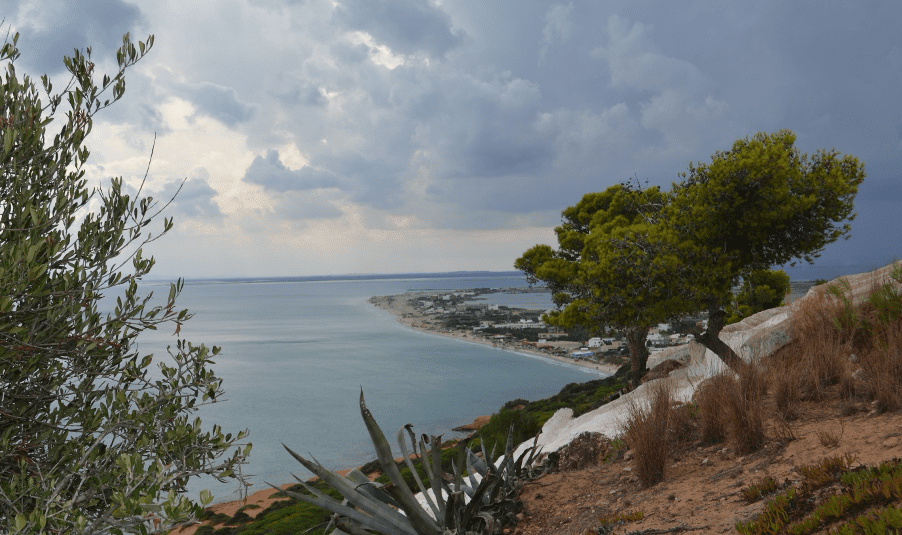The ancestral wetlands of Ghar El Melh
It’s a delight for the palate – but it’s so much more than that. Behind this scarlet fruit lies an ancestral, cultural connection between the people of Ghar El Melh and the lagoon they call home.
Coastal wetlands, from salt marshes to mangroves to lagoons, are bursting with biodiversity. However, across the Mediterranean, wetlands are under threat. We’ve lost half of their area in the last 50 years and 36% of Mediterranean wetland species are threatened with extinction.
Given the vital role wetlands play as a natural habitat and a source for food and freshwater, we must protect them to preserve nature. That’s crystal clear. But at the same time, and perhaps surprisingly, protecting wetlands is also about preserving culture.
Let’s go for a stroll around Ghar El Melh, and just take a look at the cultural depth of the wetlands here. In this northern Tunisian lagoon, culture is everywhere. This place has hosted a Phoenician colony, a Roman city, an Ottoman fort, and even a pirate base! It is this rich and diverse history that built the cultural traditions you can see today.
Around this time of year, if you peek around the lagoon, you might notice an artisanal fisherman showing his latest prize catch – probably an eel. Traditional fishing techniques have been passed down from father to son for generations. You might see a father teach his son how to bait squid with crab traps. The traditional way of fishing in the wetlands is at complete odds with intensive overfishing: it respects natural boundaries, and does not take more than what nature can provide.
Continuing your walk up the lagoon, you might see someone getting their hands dirty. They’re farming! The artisanal farming tradition of Ghar El Melh is quite unique: they do everything by hand. Using a technique introduced during the Andalusian period, farmers grow their crops, Ramli, with a mix of sand, earth, fresh water and salty water on man-made islets in the lagoon.
The farmers have mastered these ancestral techniques to grow potatoes, tomatoes, onions, peppers, fennel and even watermelons in the sandy shores of the lagoon. They would usually keep ten percent for their own consumption and sell the rest at the market. After a hard day’s work, they might use their wetland-grown produce in a delicious tajine or chackchouka: traditional Tunisian dishes.

In Ghar El Melh, artisanal farming and fishing provide food for the body, and food for the soul. Unfortunately, many farmers are now having a hard time persuading their children to take over after they retire, which can put pressure on some of them to sell their land to big hotel projects – another threat to an already vulnerable lagoon.
Overlooking the wetlands, you can also appreciate the typical architecture of Ghar El Melh. A few buildings particularly stand out. Three magnificient 17th century Ottoman forts, Borj Lazarit, Borj El Wistani and Borj El Loutani, are impressive reminders of the lagoon’s rich history. Much like the wetlands themselves, these forts were adapted to different uses over time – they served as prisons, schools and even accommodation. Every year, they host one of Ghar El Melh’s most famous cultural events: the international photography meet.
These forts are an interesting contrast to typical ecological buildings of the area: the Demous is an ecological construction using a semi-natural cavity in the mountainside – a sort of modernized cave. If you see a storehouse with a green roof, look a little closer: the colour probably comes from plants that are grown on top of them (usually “sleeping beauty” – Oxalis corniculata).
One building in particular has a very strong cultural, even spiritual significance for the people of Ghar El Melh. It’s the Sidi Ali Mekki shrine. A long time ago, he was a saint who saved the village from invaders. A shrine was built in his memory, which still stands today. It’s a place of pilgrimage for many. From the shrine, you can look at the lagoon, light a candle and say a prayer. During the Second World War, this shrine was once a refuge for the local population, who were taking cover from the retreating German troops.

Healthy wetlands also mean a healthy tourism industry. Ghar El Melh’s unique culture and landscape attracts visitors from around the world and gives them more to see than just its sandy beaches (though that’s nice too!)
Ghar El Melh is home to many species. Bird-lovers can observe flamingos, Eurasian Curlew and even the rare Audouin’s Gull. You can also find endemic plants. The lagoon hosts rare species of thyme and rosemary – the latter being used in both cooking and plant-based medicine.
The wetlands are home to so much life. However, they’re under threat. On top of climate change, water pollution from fertilisers, pesticides and industry waste are threatening life in the lagoon as we know it. But there is hope: the municipality has just created a special commission for people who care about nature conservation. We should light a candle for them at the Sidi Ali Mekki shrine!
For the people of Ghar El Melh, the wetlands are inseparable from their very identity.
If you look through the window of a house overlooking the lagoon, you might catch a glimpse of a woman sewing el chbeyka – typical clothing from the region. Much like el chbeyka, nature and culture are tightly interwoven: they are not as separate as one might think.
Indeed, nature and culture feed each other. Without the wetlands, you don’t get the fresh ramli-grown tomatoes at the market for your Friday family couscous.
In Ghar El Melh and beyond, protecting wetlands is about so much more than clothing, food, herbs, fishing, history, even survival: it’s about life at its fullest.







